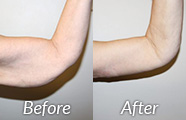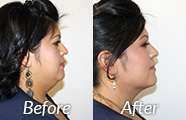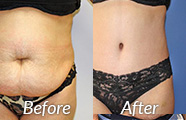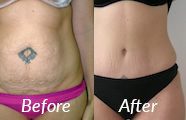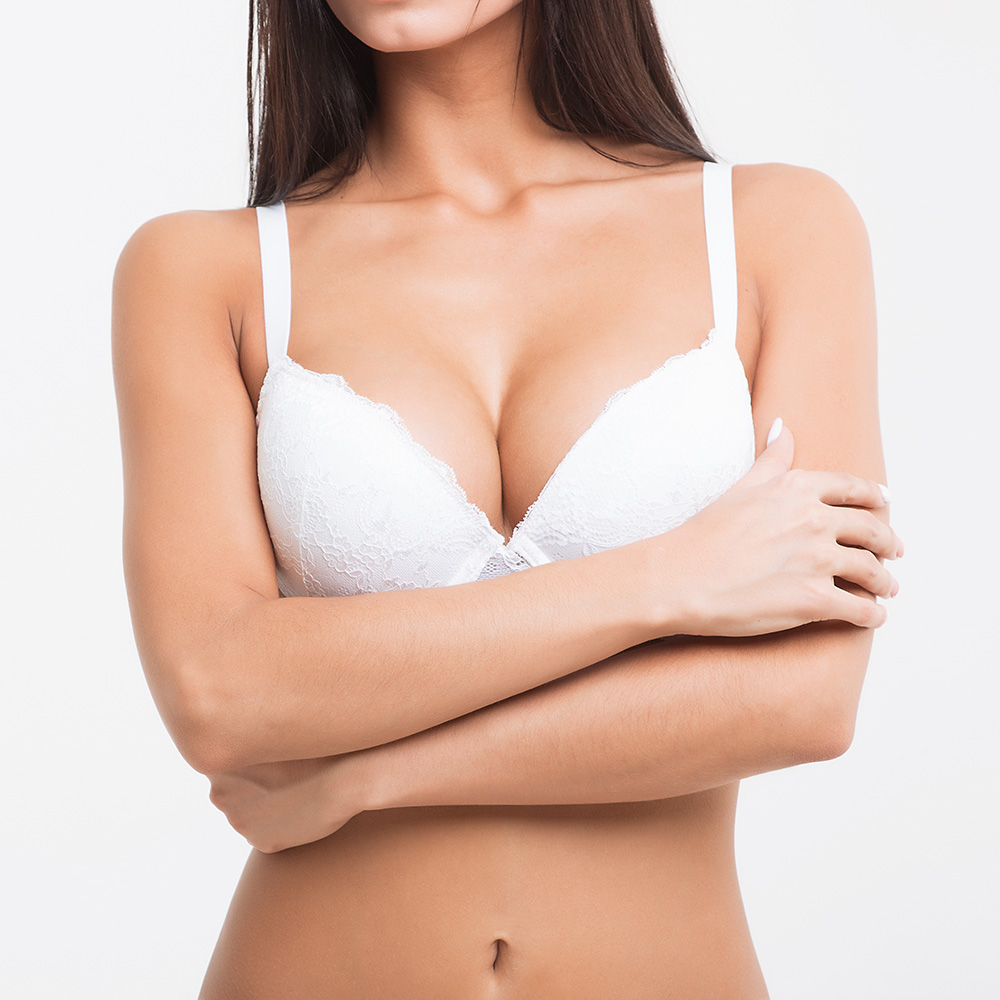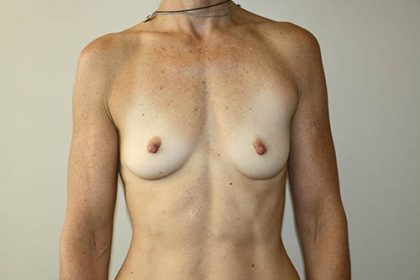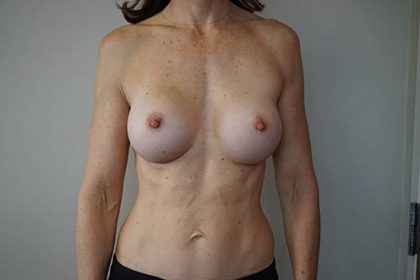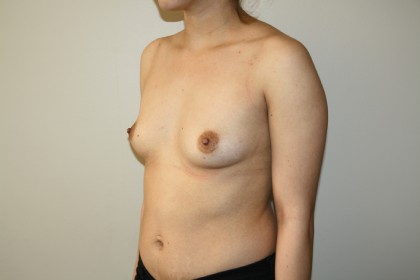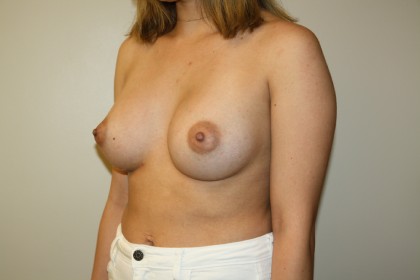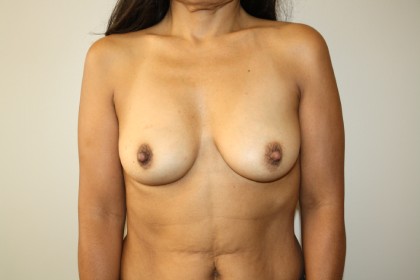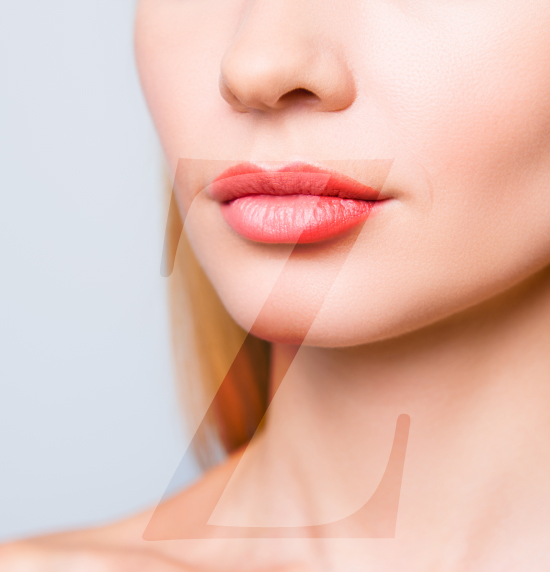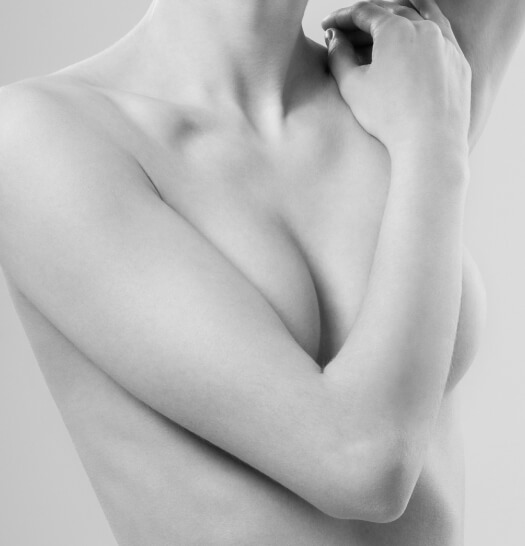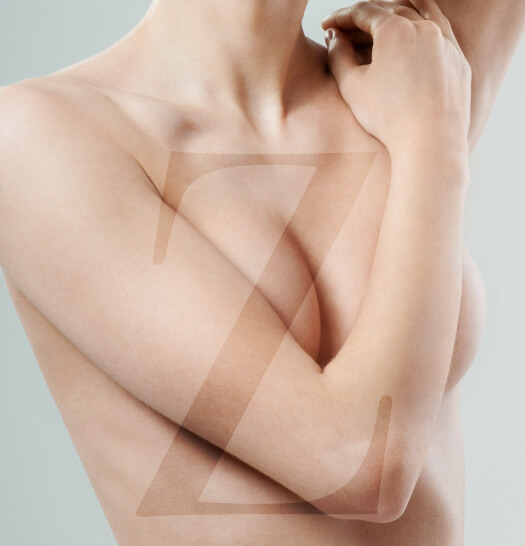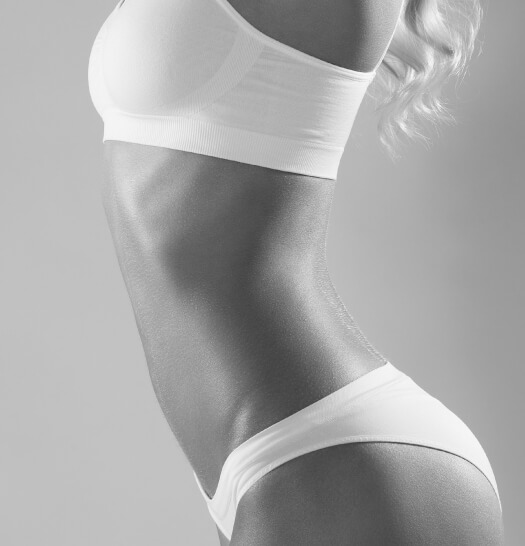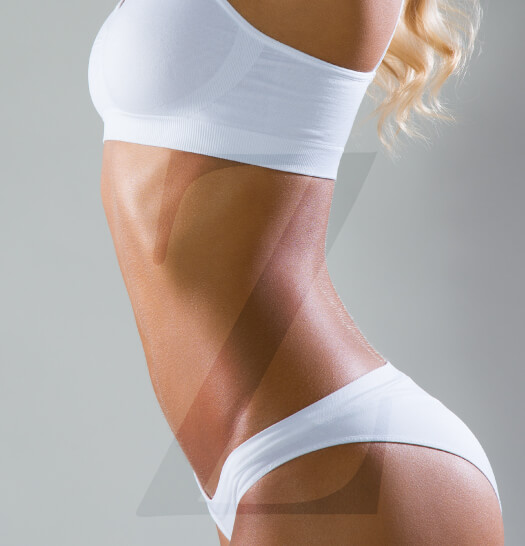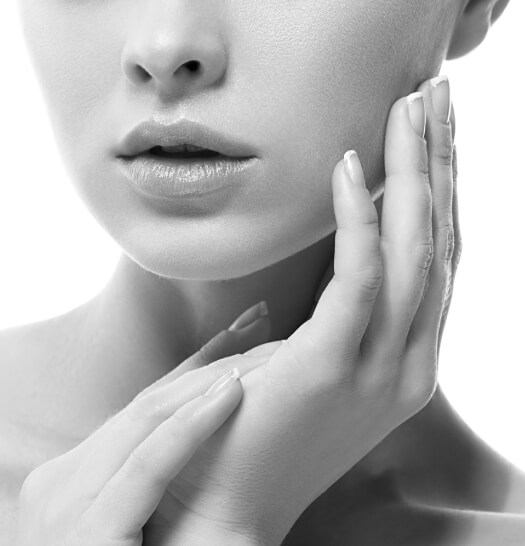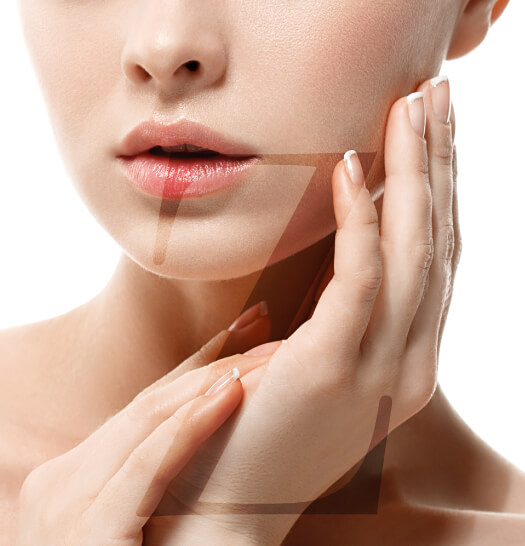Fat Transfer Breast Augmentation
Conveniently located to serve the areas of Santa Monica, Beverly Hills and Greater Los Angeles
Fat transfer breast augmentation is a minimally invasive procedure that involves removing excess fat from one area of the body- such as the abdomen or legs- and transferring it to the breasts to achieve a fuller and more shapely appearance. Also known as autologous fat grafting, it incorporates liposuction techniques to harvest fat through suction and then purify and reinject it for cosmetic enhancement. It offers women the opportunity to enhance their breasts naturally, using their own fat tissue. The results of fat transfer breast augmentations are permanent and don’t require any follow-up surgery. It not only provides the benefits of natural breast augmentation, but it also offers the added advantage of unwanted fat reduction in another part of the body that may need some sculpting.
At Zarrabi Plastic Surgery, we understand that every woman’s desires and goals for breast enhancement are unique. Dr. Michael Zarrabi is a highly skilled and experienced board-certified plastic surgeon, researcher, and lecturer who specializes in breast fat transfer procedures. With his meticulous attention to detail and artistic approach, he can help you achieve the beautiful and natural-looking results you desire. Call one of our locations in Santa Monica or Beverly Hills, CA at (310) 584-9990 or request a personal consultation online through our contact form.
Contents
Before and After Photos
About Fat Transfer
Fat transfer procedures are not only limited to enhancing the breasts; many patients look to utilize their own fat deposits to enhance their face and buttocks as well. Fat transfers are made possible through the power of liposuction, a widely used and researched technique for collecting fat.
In its most basic form, fat transfer has been around for a long time. In fact, the very first fat transfer performed was by Dr. Vincenz Czerny in 1895! Dr. Czerny successfully transplanted a fatty mass from the buttock to restore lost volume within a breast that had undergone breast cancer surgery. In 1912, a few years later, Dr. Eugene Holländer found that the injection of fat into the breast tissue can reduce scarring and fill in irregular creases.
When liposuction became hugely popular in the 1980s, fat transfer became easier than ever. Liposuction allows for a larger amount of fat to be liquified and grafted to the breast for more strategic and safer enhancement. (1)
Benefits of Fat Transfer
This procedure has a unique variety of benefits that make it an extremely popular method of breast augmentation:
- No sutures are required
- No extra MRI scans, like those required for breast implants (2)
- Only requires incisions of about 2 mm. (3)
- Provides a natural look and feel that is less likely to result in contour irregularities
- Only 1 week of downtime is required
- Permanent results if a stable weight is maintained
- No maintenance surgeries or treatments required
Personal Consultation
The first step in your journey towards breast augmentation through fat transfer is a personal consultation at Zarrabi Plastic Surgery, located in both Beverly Hills and Santa Monica. Led by renowned plastic surgeon, Dr. Michael Zarrabi, our practice is dedicated to providing comprehensive and personalized care to each and every patient.
Dr. Zarrabi will examine your breasts, evaluating their size, shape, and symmetry, as well as the condition of your skin and underlying tissues. This assessment is crucial in determining the best approach for achieving your desired outcome. To see what a consultation can do for you, call us at (310) 584-9990 or reach out to us for an appointment online.
Preparation
Dr. Zarrabi will go through your medical history and take into account any pre-existing conditions or medications that may affect the surgery. He will advise you to stop taking blood thinning supplements and medications since they may cause more bleeding and bruising. Imaging studies, such as mammograms or ultrasounds, may also be recommended to provide a detailed analysis of your breast tissue and aid in surgical planning. He will also require you to stop smoking cigarettes and consuming other nicotine products for 4 to 6 weeks before your procedure. Quitting smoking is vital so that your blood circulation is working at its best, and you’ll be able to heal much faster.
Fat Transfer Breast Augmentation Procedure
The procedure begins with the gentle and meticulous removal of excess fat from a donor area where there is unwanted fat, such as the abdomen, thighs, or hips. To start, Dr. Zarrabi will administer either general anesthesia or local anesthesia with sedation, depending on your preferences and his medical recommendation.
With only a 2 mm incision, he will administer tumescent fluid, a solution of lidocaine and epinephrine. While the lidocaine provides a numbing effect, the epinephrine makes the fat denser and able to separate from surrounding tissues with ease. With a thin instrument called a cannula, he will meticulously and gently suction loose fat from the donor area before purifying it in a centrifuge.
After the purification process, he will prepare the fat into syringes. With 2 mm incisions along the areola and underside of the breast, Dr. Zarrabi will use his surgical expertise to strategically inject the purified fat into the breasts, sculpting and enhancing their size, shape, and contour. To complete the procedure, he will cover the incisions with gauze and surgical tape; no sutures are needed. From beginning to end, the surgery takes between 2 to 4 hours, depending on the nature of your treatment plan.
Fat Transfer Breast Augmentation v.s. Breast Implants
Breast implants are arguably the more well-known method of breast augmentation. Zarrabi Plastic Surgery’s silicone Sientra implants are highly customizable and state-of-the-art. With medical guidance, women can choose the right implant size, shape, and projection that suits their bodies.
For other women who do not want to go through implant replacement, breast revision surgery, or even implant removal 10 to 15 years down the line, fat transfer is the ideal option. Breast implants also require that you receive an MRI scan 3 years after the procedure and every 2 years after the initial scan. One limitation of fat transfer is that it can only increase your breasts by about one cup size. (4) For those looking for even more volume, our Sientra implants can be a more viable solution. Deciding between implants or fat transfer can be a topic of discussion between you and Dr. Zarrabi at your consultation.
Recovery and Results
After undergoing a breast fat transfer, Dr. Zarrabi and his expert team will carefully monitor and manage your recovery. Following the procedure, it is normal to experience some swelling and bruising in the treated area. To minimize these effects, you’ll be required to wear a supportive surgical bra for a few days before switching to a comfortable compression garment for the next few weeks. Dr. Zarrabi may prescribe medication to manage any discomfort that you may experience during this time.
In the donor area where the fat deposits were harvested, you will have to wear a separate compression garment for at least for 8 weeks. After 1 week, you’ll be able to return to work if it is sedentary. A few weeks into your recovery, you’ll be able to begin some form of cardio exercise, and after around 8 weeks, it will be safe for you to resume heavy lifting and more strenuous workouts.
The results won’t be apparent right away because blood vessels in the breasts need time to integrate into the new fat cells. You will get an idea of your results after the swelling subsides, and your final look will settle in after another 3 to 6 months. Dr. Zarrabi recommends maintaining a healthy, stable weight so that fat cells won’t shrink or become too large.
Cost of a Fat Transfer Breast Augmentation in Los Angeles
Each fat transfer procedure has its own unique set of factors that contributes to the overall cost. Whether you are considering breast augmentation, liposuction, body contouring, or any other cosmetic surgery, our team will discuss the specific costs associated with your desired procedure during your consultation.
Achieve natural-looking breast augmentation results with fat transfer. To book your one-on-one consultation with Dr. Zarrabi, please call (310) 584-9990 or reach out to us using our online form.
Read more about breast augmentation and other procedures on Dr. Zarrabi’s blog.
FAQ
Do fat transfer breast augmentations leave scars?
Breast augmentation for fat transfer doesn’t leave significant scarring because incisions are only a few millimeters, roughly ⅛ of an inch. Many women find that the scars are so subtle that they just leave them be. Other options include applying scar cream and/or silicone gel once they are fully healed to minimize them further.
Will I ever lose the fat from a fat transfer breast augmentation?
The fat deposits that fully graft and have access to a blood supply within the breast will never leave your body. However, with weight fluctuations, the size of the fat cells fluctuates. With weight loss, the fat cells can atrophy more, temporarily reversing the effects of the procedure. With weight gain, the grafted fat cells will expand more and volumize your breasts.
How much fat is harvested in a fat transfer breast augmentation?
The average amount of fat harvested is between 55 to 135 ml, which amounts to ¼ of a cup to a little more than half a cup for each breast. While it might not seem like a lot, it can increase your breasts by one whole cup size due to fat cells’ ability to expand.
References
- Spear SL, Coles CN, Leung BK, Gitlin M, Parekh M, Macarios D. The Safety, Effectiveness, and Efficiency of Autologous Fat Grafting in Breast Surgery. Plastic and Reconstructive Surgery – Global Open. 2016;4(8):e827. Doi: https://doi.org/10.1097/gox.0000000000000842
- Hyung Bae Kim, Hyun Ho Han, Jin Sup Eom. Magnetic Resonance Imaging Surveillance Study of Silicone Implant-based Breast Reconstruction: A Retrospective Observational Study. Plastic and reconstructive surgery Global open. 2023;11(6):e5031-e5031. doi:https://doi.org/10.1097/gox.0000000000005031
- Bellini E, Grieco MP, Raposio E. The science behind autologous fat grafting. Annals of Medicine and Surgery. 2017;24:65-73. doi:https://doi.org/10.1016/j.amsu.2017.11.001
- Davis MJ, Perdanasari AT, Abu-Ghname A, et al. Application of Fat Grafting in Cosmetic Breast Surgery. Seminars in Plastic Surgery. 2020;34(01):024-029. doi:https://doi.org/10.1055/s-0039-1700958


